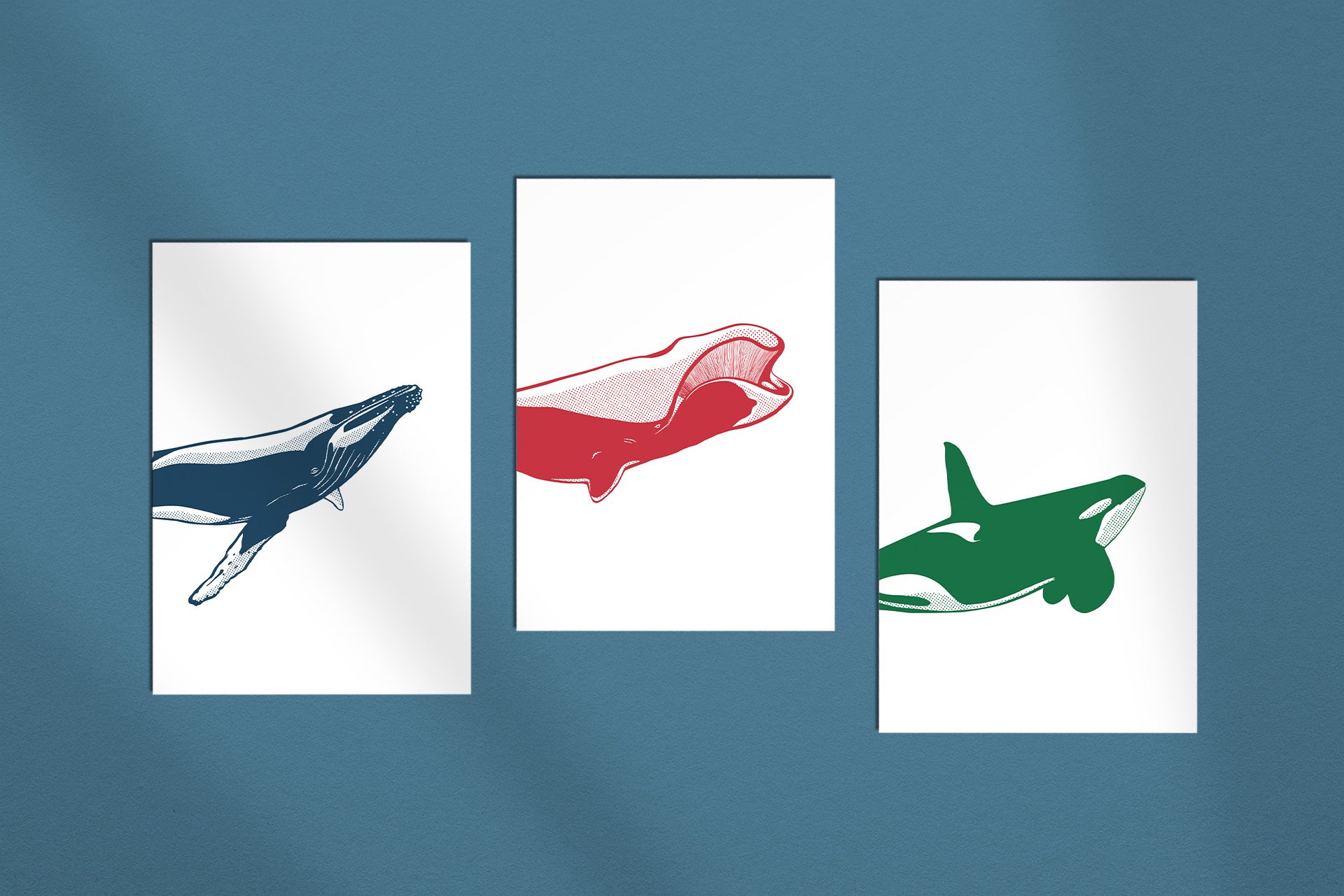AZOREs
Vulcanic, remote, tropical green: the Azores are the Hawaii of the Atlantic. Main Difference: fewer beaches, more whales!
Photo: Oliver Dirr / Whaletrips
whales: AZOREs
In the Azores, a microscopically small group of islands in the middle of the Atlantic, a good 30 per cent of all the world's whale and dolphin species can be observed. And that's exactly why many people come here.
The Azores belong to Portugal and are located around 1,500 kilometres from the mainland, almost halfway to Canada. Due to this location right in the middle of the Atlantic, the archipelago used to be an important starting point for whaling. Today, around 30 per cent of all the world's whale species can be observed here, including blue whales, fin whales and sperm whales.
Whale watching is one of the main attractions for tourists in the Azores, and many come here specifically for the whales. Most tours start on the three islands of Sao Miguel, Faial and Pico and usually involve high-speed zodiacs for up to twelve people. Multi-day tours are also offered, even lasting up to 15 days.
A blue whale surfaces close to our boat. For comparison: the shearwaters in front of it have a wingspan of around 1.15 metres. Photo:Oliver Dirr / Whaletrips
Observations from land are possible as well – even the providers utilise this possibility by posting spotters at suitable vantage points who scan the sea for whales with telescopes and radio their position and direction to the boats.
Some whales live permanently in these waters, others only pass by the Azores on their migrations. The most frequently seen whales are sperm whales, males are found all year round in these waters, females and their young are mainly seen from May to October.
There is also a good chance of seeing blue and fin whales in the Azores – ideally between mid-April and mid-May when they are travelling north. Some dolphin species (common dolphins, Risso's dolphins, striped dolphins and spotted dolphins) can also be seen here regularly.
Photo: Oliver Dirr / Whaletrips
TO DO: AZOREs
What Hawaii is to the Pacific, the Azores are to the Atlantic: an extremely remote archipelago of volcanic origin. Although there are neither tropical paradise beaches nor flowing lava streams here, there are endless hiking trails where you won't cross paths with anyone.
The Azores are located in the middle of the Atlantic Ocean – a good 1,400 kilometres from the European mainland and around 2,400 kilometres from North America. Politically, the nine larger and many smaller islands belong to Portugal, but geographically some of them are already on the North American continental plate.
The most important islands for tourism are Faial, Pico, Terceira and Sao Miguel with the capital Ponta Delgada (approx. 45,000 inhabitants). The other municipalities of Horta, Madalena and Vila Franco do Campo usually only have a few thousand inhabitants.
Due to its central location, the subtropical climate is very balanced throughout the year: The winters are very mild and the summers are not extremely hot, which makes the Azores easy to visit all year round – the best time for whale watching is nevertheless summer between April and October.
A good 30 per cent of all whale and dolphin species in the world pass through the Azores at some point during their annual migration between Arctic and tropical waters. Located in the centre of the warm Gulf Stream, the Azores are also among the waters with the most fish in the world. Many seabirds also use the islands as a resting place on their way between their annual winter and summer quarters.
“The highest volcano is Ponta do Pico – at 2,351 metres, it is actually the highest mountain in Portugal. However, the hike to the mostly fog-covered summit is only for the experienced.”
Unlike Hawaii, there are no world-famous tropical paradise beaches in the Azores. Those travelling to the Azores are less interested in swimming or surfing and more in nature, peace and seclusion, e.g. hiking, climbing or mountain biking. The Azores, with their rich fishing grounds and many caves and wrecks, are also a popular destination for divers, both beginners and advanced.
As in Hawaii, many endemic species have developed in the Azores – animals and plants that can only be found here. Having somehow arrived on the islands from the mainland a long time ago, they have subsequently developed in a completely different way to their relatives on the mainland. Large parts of the islands are therefore protected. The flora is also similar to that of Hawaii: lush, green areas alternate with barren volcanic landscapes.
The ideal companion for your next trip: Check out our NOTES in five great colours – with plenty of space for all notes, observations and memories. Order now!
However, there are no active volcanoes in the Azores, and there is no lava flowing anywhere. Nevertheless, the volcanic origin is visible everywhere – and in places like Lagao das Furnas, with its hot sulphur vapours, you can really smell it. In the 100 metre deep Algar do Carvao volcanic vent, ejected lava created a huge lava chimney over 2,000 years ago, through which you can now descend past stalagmites and stalagtites.
The Lagoa do Fogo (Lake of Fire) on San Miguel is also completely surrounded by lava mountains – a popular hiking route. The highest volcano is Ponta do Pico, at 2,351 metres the highest mountain in Portugal. However, the hike to the summit is only for experienced hikers.
One of the most popular (and one of the easier) hikes leads along the edge of the Sete Cidades crater, with a beautiful view of the two lakes Lagoa Verde and Lagoa Azul – one usually appears green because it reflects the green landscape, the other blue because it reflects the blue sky. However, this only works with a cloudless sky. A good overview of the trails on the individual islands can be found here.
Even more Places
〰️
Even more Places 〰️
Whaletrips Shop
The ideal Companion for your whale trip
All the whale facts you need while on the road – with plenty of space for own thoughts and observations!
Whaletrips Shop
Our Whales as Cards and Stickers
Colourful, finely illustrated, ready to stick on: Our whales are now available as stickers and greeting cards!
Whaletrips Shop
Beautiful whale Notebooks
Whether for travelling or at home: our high-quality whale notebooks come in five beautiful colours!
Whaletrips Shop
Our favourite photos for your home
Brightens any wall: a selection of our favourite motifs is available as elegant fine art print for your home.








